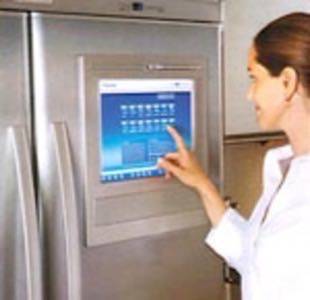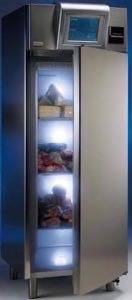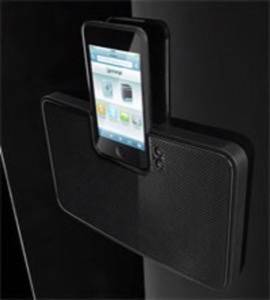The Internet fridge is probably the most oft-quoted example of what the Internet of Things – when everyday objects are connected to the Internet – will enable. Imagine a refrigerator (so the story goes) that monitors the food inside it and notifies you when you’re low on, for example, milk. It also perhaps monitors all of the best food websites, gathering recipes for your dinners and adding the ingredients automatically to your shopping list. This fridge knows what kinds of foods you like to eat, based on the ratings you have given to your dinners. Indeed the fridge helps you take care of your health, because it knows which foods are good for you and which clash with medical conditions you have. And that’s just part of the sci-fi story of the Internet fridge.

This type of ‘smart home’ fridge has actually been attempted before, in the dot com era, and flopped. Has there been much progress since then in the Internet fridge market? Let’s find out.
This is What We Want…
This video shows a prototype of a fridge that uses RFID tags to automatically notify you when milk needs to be bought. Designer Kim Otto took a Siemens refrigerator and replaced the existing flat screen with a touch screen panel PC, then added an RFID tag reader.
…But, Let’s Tack a Computer and TV onto The Fridge For Now
The reality is less exciting than what Otto presented. It turns out that the appliance market isn’t quite ready for internet fridges that go beyond mere entertainment.
The Electrolux Cyber fridge was released in 2006 and it pretty much sums up the current state of the market for Internet fridges. As the Appliancist website noted: “The Screenfridge is equipped with a computer and a touch screen so you can surf the Internet, send e-mails and buy and order food for your home without leaving the kitchen […]”
In other words, it’s just a computer tacked onto a fridge. No automation, no RFID tags, none of the ‘Internet of Things’ functionality we’re all looking forward to.

Samsung’s Wireless ICE Pad refrigerator is another of this ilk. Its main feature is a detachable LCD touch pad computer. It also features an “entertainment center” (i.e. a TV); along with a calendar, scheduler, message board for “smart food management.”
The most recent I found was reviewed by Webware earlier this year: a fridge by Whirlpool featuring a detachable tablet computer made by Data Evolution.
It’s not just computers and TVs being tacked onto fridges either. Last year Gorenje released a “Made for iPod” refrigerator, which as the name suggests is a fridge with an iPod on it. The fridge freezer features an iPod docking station, wireless LAN for Internet connection, and built-in speakers. One of the suggested use cases is watching video recipes.

Wait, There Are Some Good Uses for Internet Fridges
Perhaps the most interesting innovation we’re seeing with Internet-connected fridges right now are ones that use Web technology to save power and optimize themselves.
A good example is GE’s demand-response refrigerator, which can adjust its settings and reduce power consumption based on pricing signals from the electricity company. As Greentech Media reported earlier this month, GE has partnered with energy technology company Tendril to “develop algorithms and other technology that will essentially allow utilities employing Tendril’s TREE platform [Tendril Residential Energy Ecosystem] to turn GE […] appliances off or on to curb power consumption.” This is done either via the Internet or special sensor meters. It’s estimated that demand-response systems like this save between 10-30% in electricity consumption in homes.
The Time is Still Nigh
Clearly the age of the Internet fridge hasn’t yet arrived. Adding computers and TVs to fridges has been tried by many of the main fridge manufacturers, but those efforts were half baked.
Until RFID tags that connect to the cloud become more common place on food items, the Internet fridge is yet another product looking for a solution. We’ll check back in a couple of years!





















